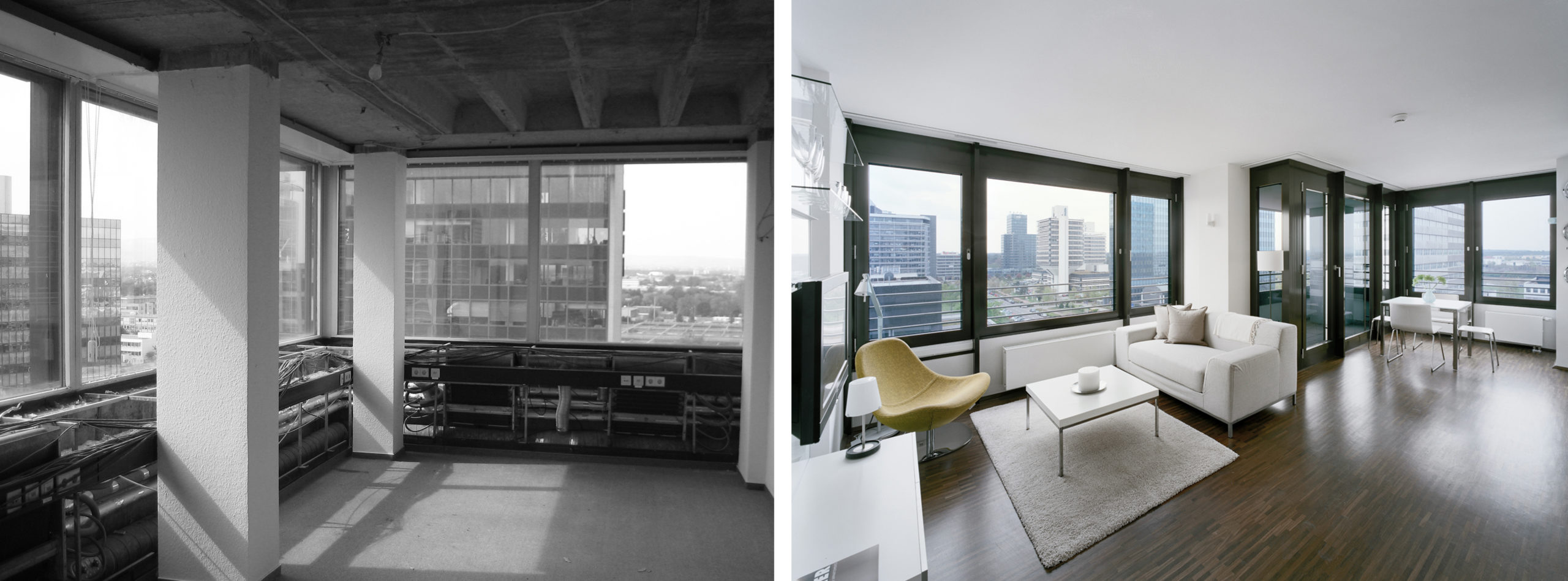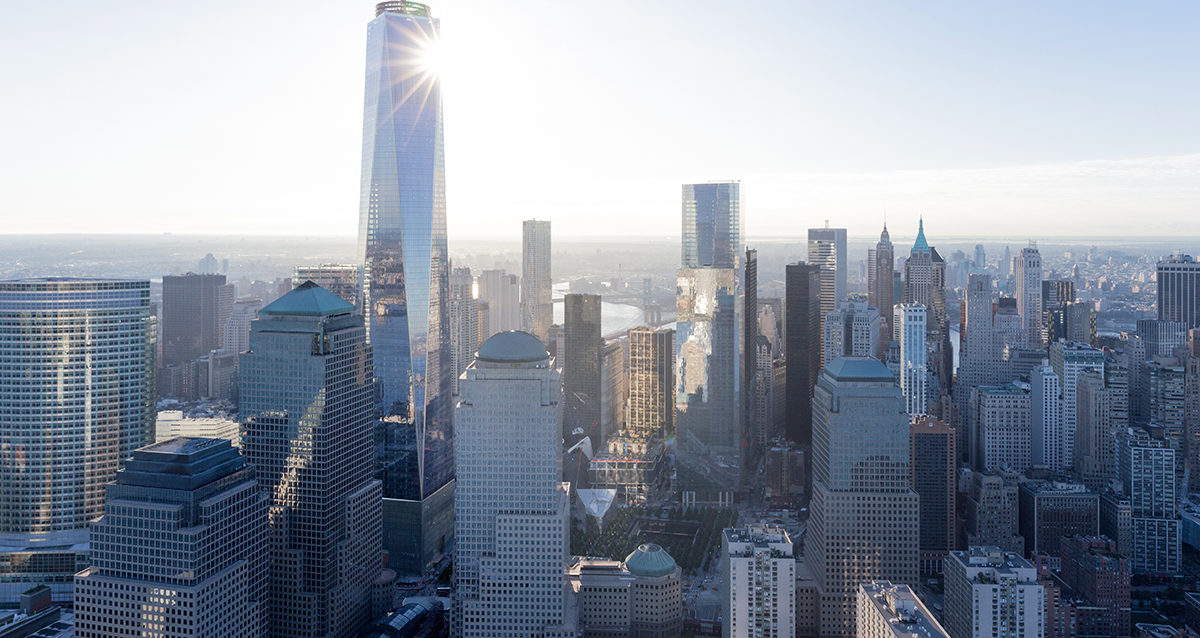Last chance: The 14th Architizer A+Awards celebrates architecture's new era of craft. Apply for publication online and in print by submitting your projects before the Final Entry Deadline on January 30th!
In many office buildings across North America, the much-anticipated return to in-person work has not materialized exactly as hoped. Nearly a full year since most work-related pandemic restrictions have been lifted, the commercial real estate sector is still struggling to fill empty office floors. In 2022, the office vacancy rate in the United States was hovering at 12.3 percent, up from 9.6 percent in 2019, and nearing the 13 percent high reached in the aftermath of the Great Recession. And in some cities hit that have been hit particularly hard —San Francisco, New York and Seattle, to name a few — sky-high vacancy rates could hollow out buildings completely, threatening to turn business district city blocks into ghost towns.
Though these recent trends are certainly a cause for worry, architects are seeing in these vacant office spaces a potential solution to another problem facing cities: housing shortages. According to the nonprofit research group Up For Growth, the United States is 3.8 million homes short of meeting its current housing needs. In cities like San Francisco, this translates to a shortage of over 110 000 housing units, leading to skyrocketing home prices and rents. The need for more housing is clear, but building from scratch can be an expensive, long and complicated process. Would it be possible, as some firms are asking, to convert commercial office space into residential space?


This pilot project for restructuring a former office district into a lively mixed-use area involved the redesign and modification of an unused, derelict 14-storied office building into a 17-story apartment tower. | Transformation into residential tower “Lyoner Straße” by Stefan Forster GmbH, Frankfurt, Germany
This type of conversion could offer solutions to many city problems. Otherwise, empty office buildings would find new, permanent occupants and hence a new form of revenue for both commercial owners and municipalities. Meanwhile, cities would benefit from a quick influx of new, advantageously located housing without the lengthy and costly process of destroying existing buildings and constructing anew. And an increase in residents in commercial districts could serve as a catalyst for struggling downtowns, giving a greater reason for investment in parks, community services and public transportation in those areas.
One intriguing case study for these ideas is Calgary, where a mix of economic downturn and the pandemic-induced shift to remote work has led to an exodus of workers from the office. The downtown office vacancy rate reached 32% in 2021, up from 24% a year earlier — an equivalent to 12 million square-feet of vacant office space. Of these unoccupied office floors, a disproportionate number are found in aging buildings from the late 1960s and 1970s. These buildings are usually labelled Class B or Class C, and are less amenity rich than Class A offices and less likely to attract new tenants. Save a miraculous reversal in the city’s fortunes, Calgary risks finding itself with a slew of old, largely unused office spaces that will likely drift into neglect.

Various European countries have already explored this strategy for urban renewal. This conversion of a former office building into residential use involved a complete reimagining of the façade elevation. | Salaino 10 by Antonio Citterio Patricia Viel, Milan, Italy
Last year, the city of Calgary commissioned the architecture firm Gensler to undertake a study of the downtown’s underused office buildings to assess the potential of residential conversion. The results were eye-opening: of the twenty-eight buildings studied, Gensler concluded that approximately 30% could viably be converted, potentially adding 2000 new residential units for 4000 people in Calgary’s downtown. But more surprisingly, the study found that the city’s oldest and least attractive office building stock — generally Class C offices — were best suited for conversion given the relative ease of stripping down ceiling tiles and ducts to make way for high-ceiling, spacious and well-lit apartments.
In which case, the office building at 909 5th Avenue in Calgary’s downtown is a perfect candidate for a residential retrofit. The aging ten-story, 129 000 square foot office building has been largely vacant for the past few years and is unlikely to draw new tenants any time soon. At the same time, the building is ideally situated on a dense street corner in the city’s commercial district, near a host of parks, restaurants and transit hubs — prime location for a residential development.


The building was originally designed in 1957 as the headquarters of the iconic Greek architect and urban planner Constantinos Doxiadis. The building had been abandoned for over 20 years before it’s fortunes were reversed. | One Athens Apartment Building by Divercity Architects, Athens, Greece | Photo by Dianna Snape
Seeing this as an opportunity, the Calgary-based firm Peoplefirst Developments has taken on the challenge of converting rather than rebuilding the office tower. Their retrofitting project, dubbed The Cornerstone, is slatted to be completed next year and will create up to 112 two- and three-bedroom apartments, of which 40% are planned to be rented at below market rates. And though the building will remain largely structurally unchanged, it will certainly not be mistaken for an office: the firm’s design includes a complete facelift of the façade and the addition balconies for the units, giving a cozy and contemporary feel to the soon-to-be apartment building.
While there is much potential for office conversions like The Cornerstone, these projects don’t materialize out of thin air. Local and federal governments need to make concerted efforts to facilitate and fast-track such projects, which only then will incentivize architecture firms to undertake large-scale retrofit. But put together, office conversion can become an important tool to alleviate housing shortages and office surpluses in cities in the years ahead.
Last chance: The 14th Architizer A+Awards celebrates architecture's new era of craft. Apply for publication online and in print by submitting your projects before the Final Entry Deadline on January 30th!

 One Athens Apartment Building
One Athens Apartment Building  Salaino 10
Salaino 10  Transformation into residential tower "Lyoner Straße"
Transformation into residential tower "Lyoner Straße" 


